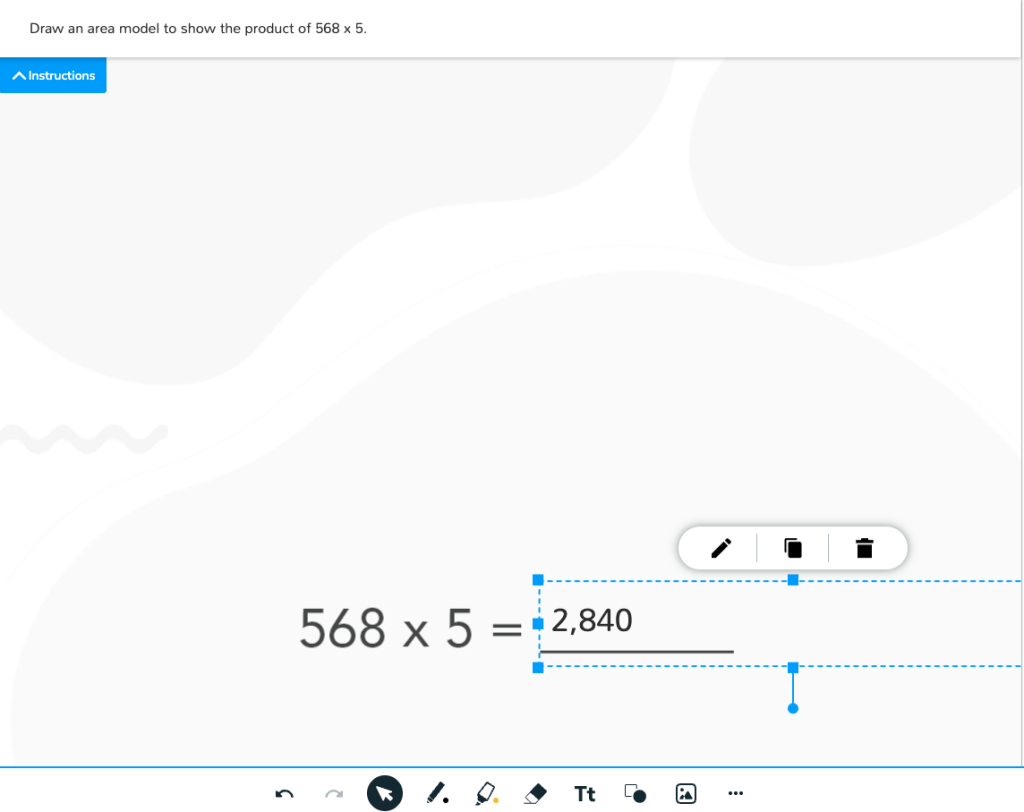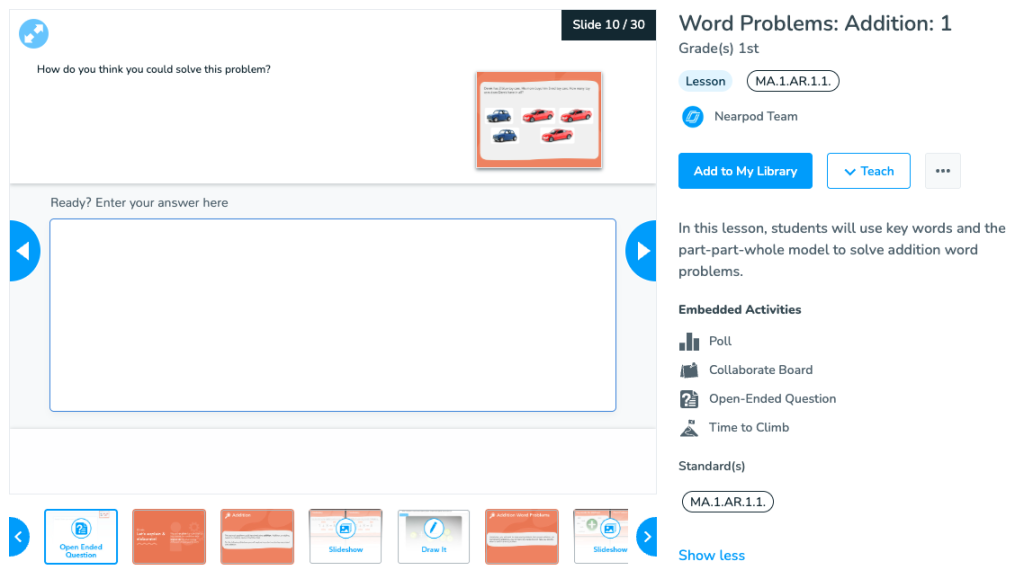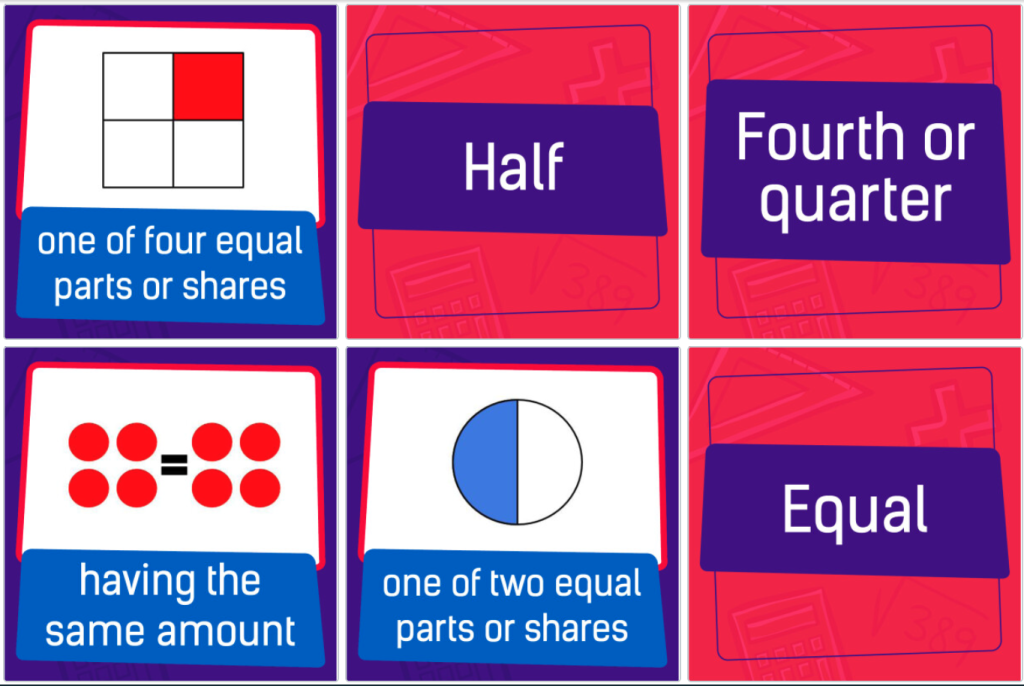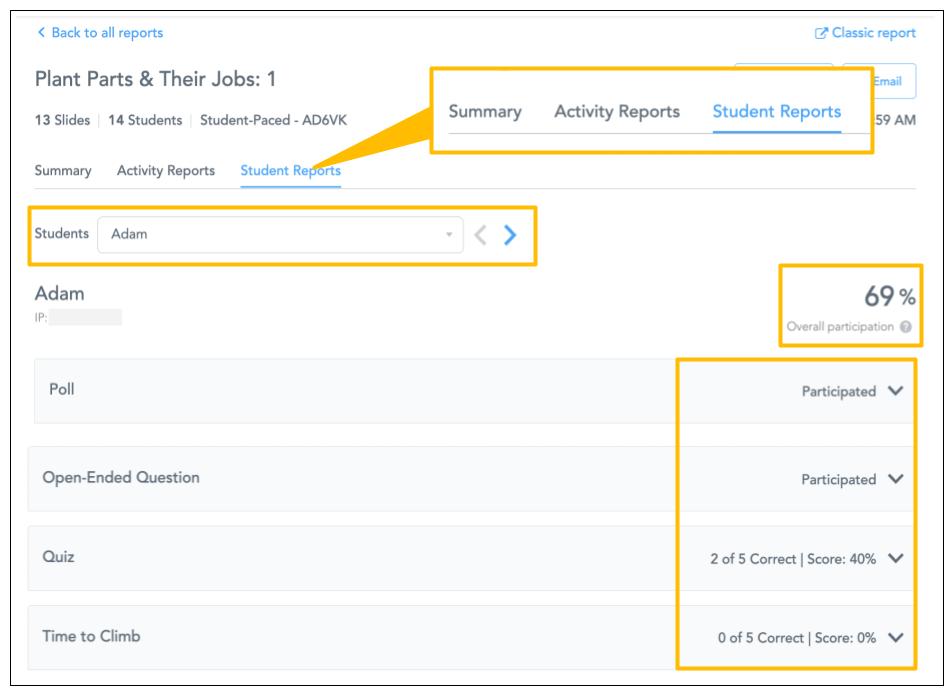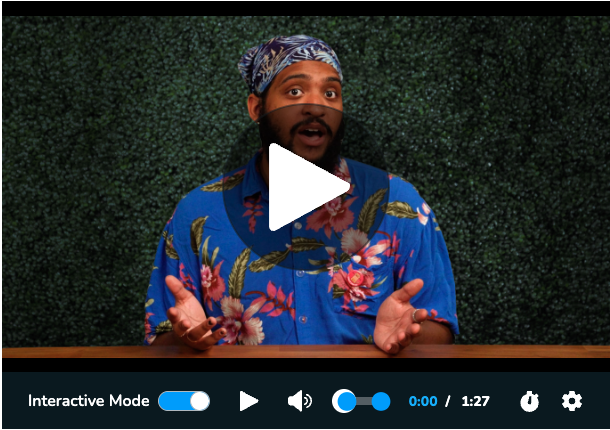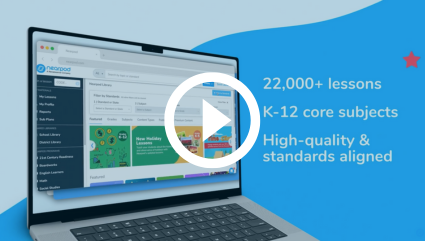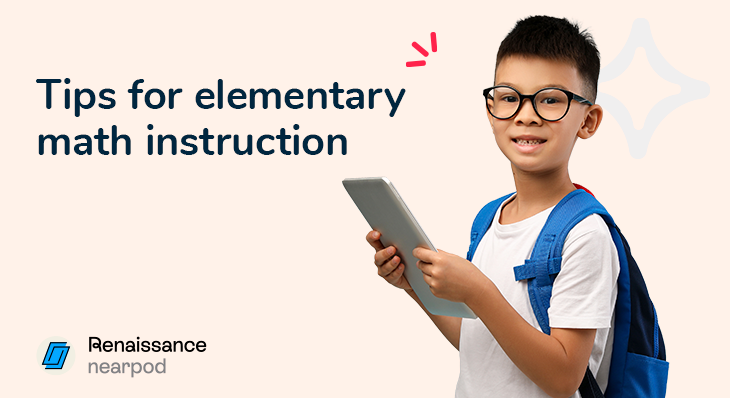
Essential tips for teaching elementary math
Math is often considered one of the most important and one of the most difficult subjects for elementary students, a perception that can persist across generations. Today’s parents may feel especially challenged by “new math,” which prioritizes conceptual understanding over rote memorization. Building strong math foundations early is critical: These skills serve as the building blocks for mastering more complex and abstract concepts later on, while also fostering flexible thinking and problem-solving abilities that extend beyond the math classroom into all areas of life.
Despite this importance, many teachers find themselves battling “numerophobia” among students—real anxiety and lack of confidence around math. Educators may also struggle with limited training, instructional methods, and teaching tools that can connect math concepts to real-world applications. With math scores already declining before COVID-19 and continuing to drop, instruction can default to dry, standards-heavy approaches. This risks overlooking the rich opportunities math offers to spark curiosity, creativity, and a genuine desire for exploration.
How to make elementary math engaging
The key to successful elementary math instruction lies in reframing mathematics as a rich, exploratory learning experience rather than a collection of abstract rules to memorize. Teachers can transform their classrooms by incorporating visual and hands-on activities that invite students to discover mathematical concepts through inquiry-based thinking. Simple everyday techniques include using manipulatives for number sense, incorporating math games that reinforce skills, connecting lessons to real-world scenarios students encounter, and encouraging collaborative problem-solving where students can discuss their thinking processes.
Successful elementary math instruction also benefits from multimedia resources, interactive activities that promote critical thinking, and tools that provide real-time feedback to both teachers and students. These approaches help combat math anxiety by making abstract concepts tangible and accessible, while building the confidence students need to tackle increasingly complex mathematical ideas. This is where edtech tools, like Nearpod, can provide the support teachers need to create truly engaging math experiences.
The power of Nearpod
Nearpod offers educators a comprehensive solution for creating active math classrooms through its extensive library of ready-to-launch lessons and dynamic multimedia content. The platform wraps both basic and complex math concepts in engaging visuals and interactive activities that promote critical thinking and collaborative learning. Nearpod’s real-time data reporting enables educators to monitor student understanding instantly and adjust instruction accordingly, while its diverse range of interactive features keeps students engaged throughout lessons. For elementary math specifically, Nearpod Math provides specialized tools and content designed to address the unique challenges of teaching foundational mathematical concepts, making it easier than ever to create the rich, hands-on learning experiences that help young students develop both mathematical confidence and competence.
New to Nearpod? Teachers can sign up for free below to access and create interactive lessons. Administrators can schedule a call with an expert to unlock the full power of Nearpod for schools and districts!
6 Essential tips for teaching elementary math
1. Number sense is #1
At its core, math is all about understanding numbers and how they work together. Whether making calculations, estimating amounts, grasping size and scale, identifying patterns, or employing logic, math requires fluency with numbers. Students (of all ages) must rely on critical thinking to look at problems from different angles and apply different strategies in order to find a solution. Plus, there are the practicalities around sequencing, understanding money, measuring, and telling time for everyday life. This idea of number sense is fundamental when it comes to teaching elementary math so that students can master the operations of and relationships between numbers.
Effective lesson plans for elementary math must address these foundational concepts. About 10 years ago, Common Core challenged math standards to be more rigorous, with the hope of better preparing students for college and careers. However, over the years, critics have claimed that the standards are too complex, the teacher training too inadequate, and the resources too inequitable. Nearpod solves these challenges through a robust library of standards-aligned lessons and activities for elementary math. The engaging slides and videos containing math activities for elementary students literally show how math concepts build in a variety of ways, helping to cement a solid foundation of numeracy. Nearpod Math is a supplemental program that covers all essential elementary math skills in a systematic, easy-to-follow way. The platform turns difficult math concepts into visual, hands-on activities that help students truly understand numbers and build strong math foundations. When teaching math becomes interactive, it naturally engages students and helps them develop stronger problem-solving skills.
During a live lesson, you can use the Live Teacher Annotation tool to type, highlight, and even draw directly on a slide, enabling you to guide understanding by emphasizing key points, showing alternative expressions, or providing real-time feedback. In return, students can use Draw It to “make their mark” when it comes to understanding (or not) key math concepts.
- Represent, Count, and Write Numbers 16-20 (grades K-1): Students will learn to write and represent numbers 16 through 20.
- Plotting Improper Fractions on a Number Line (grade 3): Students will learn to plot improper fractions on a number line by dividing it into equal parts.
- Comparing Whole Numbers (grade 5): Students will learn to compare whole numbers up to the hundred millions place using place value.
2. Promote problem-solving
At its core, problem-solving is about identifying and overcoming obstacles in order to reach a specific goal. From defining the problem to generating and evaluating potential solutions, these processes can be applied across the curriculum in elementary classrooms and beyond into our life pursuits. Problem-solving requires a host of skills, from reasoning, creativity, and curiosity to flexibility, communication, and good old grit. When it comes to elementary math, we want to teach our kids how to become problem solvers who persevere and fail forward by embracing mistakes as steps toward growth. From working on basic algorithms to deciphering word problems, problem-solving in elementary math classrooms comes in all forms. Many elementary teachers start the day with some bellwork that centers on logic problems, riddles, or brain teasers—all of which require problem-solving skills and techniques such as working backwards, finding a pattern, or guessing and checking. Part of the critical thinking skills that strong mathematicians exhibit is reflecting back on their processes!
Nearpod provides an array of elementary math lessons that provide ample opportunity to learn how to become a good problem solver. Additionally, the Nearpod Math program contains problem-based math lessons that cover key math concepts for the whole class.
Some of the best practices in elementary math instruction include modeling how to think aloud, how to break down problems into attainable steps, and how to express and manage emotions (aka math frustration!). Remember to embrace questioning as students make sense of complex concepts and invite perspective-taking to promote diverse thinking.
- Word Problems: Addition (grade 1): Students will use key words and the part-part-whole model to solve addition word problems.
- Solving Multiplication Problems (grade 4): Include this lesson in your 4th grade math lesson plans to help students learn key vocabulary, explore common mistakes, and solve multiplication problems.
- Word Problems (grades 2-5): Students will learn about word problems through an explainer video, practice with a host, and solve problems independently.
3. Get hands-on
Part of the difficulty of teaching elementary math is moving kids from the concrete to the abstract—or, quite often, helping them make sense of the abstract through concrete activities. From 2nd grade math concepts to more advanced topics, students in all grades K-5 need the opportunity to “play” with mathematical concepts by seeing a variety of representations or modeling of math’s fundamental ideas and principles (Clements and Samara, 2005). They also benefit from kinesthetic activities that encourage them to move, manipulate, and engage in trial and error so that they can build their own understanding of core math concepts. Round up pattern tiles when exploring geometric concepts, or roll dice when discovering how probability works. Use base ten blocks to visualize place value and basic number tiles when “making tens” to illustrate the associative property. These hands-on approaches work exceptionally well as 3rd grade math activities, appealing to the wide range of learning styles found in every classroom.
With a focus on instructional quality, the Nearpod Math program* includes exclusive features such as virtual math manipulatives that encourage a visual and kinesthetic approach to unpacking math concepts in real time. Four such manipulatives are available:
- Color Tiles: One-inch square tiles in four colors that have a wide range of uses such as counting, estimating, measurement, and even geometry.
- Base Ten Blocks: These dynamic blocks can reinforce place value with both whole numbers and fractions.
- Fraction Tiles: These proportionately sized tiles support students in exploring fractions—from equivalence, to adding and subtracting, to working with mixed numbers.
- Algebra Tiles: These tiles help strengthen algebraic thinking, representing the quantities x, x², and 1, along with their additive inverses.
*Nearpod Math is only available for school and district licenses. Schedule a call with an expert to learn more.
4. Encourage the math speak
Math is riddled with academic vocabulary that can make the subject seem almost foreign and the concepts way too abstract. By focusing on weaving math speak into daily instruction, your students will acquire new vocabulary that builds their familiarity and confidence around such mathematical thinking. This explicit tier three vocabulary instruction (subject-specific jargon) optimizes instructional time while teaching academic vocabulary that is bound to appear on end-of-the-year state standardized testing.
Repetition is a great way to reinforce such tier three vocabulary, but of course you don’t want to resort to a drill and kill approach. From Matching Pairs to Quizzes or Time to Climb, students can demonstrate their depth of understanding through interactive activities that can promote math speak related to math-focused concepts and processes.
Need to create custom vocabulary activities quickly? Nearpod’s AI Create tool can help you generate personalized math vocabulary lessons tailored to your students’ specific needs and grade level in seconds. If you’re looking for premade resources, you can find a host of curated lessons that center on building these vocabulary skills by simply filtering search results from the Nearpod Library.
- Shape Partitions Vocabulary: 1 (grade 1): Students can play with Matching Pairs to further explore keywords in geometry.
- Vocabulary Web: Math K-12 (grades K-12): Students use Draw It to complete a vocabulary web to help unpack specific vocab words and concepts.
- Multiplying Fractions by Whole Numbers (grade 4): Students learn how to multiply fractions by whole numbers using a visual model and the standard algorithm.
5. Follow the trail of student data
When it comes to supporting students advancing at their own pace, it is crucial to follow the trail of student data. Whether you weave checks for understanding into an activity, ask for an exit ticket as class ends, or give a quick quiz at the end of a unit, this informative data can guide how you modify, revise, or sometimes even scrap your instructional plans for the coming days. You’ll want to keep tabs on individuals’ progress as well as the group’s progress as a whole. And all the while, you’ll want to maintain a consistent cycle of meaningful feedback to encourage students in their mathematical journey.
Nearpod’s formative assessment activities provide you with individualized student data. Your classroom’s post-session reports enable you to take a data-driven instructional approach to reteaching, differentiating, or further challenging students, meeting them where they are in their math journeys. Plus, you can provide them with student feedback through Live Teacher Feedback. Even the most confident math students need encouragement and cheerleading as they challenge their own skills in solving increasingly complex problems. Plus, they, in turn, can add sticker-like Student Reactions to their work, to help signal which concepts they think they have mastered or which they might need more support on.
6. Introduce real-world mathematicians
Another way to help students picture themselves as mathematicians is to make concrete connections to the real world. Invite your students to explore different careers related to math. Nearpod features several notable figures who have advanced the field, various industries, and even the notion of equity through their professional work. These examples will help cement how math skills have real-world applications beyond trying to ace a math quiz in a classroom. From the Greek writer and mathematician, Euclid, to the “human computer” NASA mathematician, Katherine Johnson, Nearpod’s Interactive Videos provide a multimedia and interactive experience for students curious about how their math lessons can ladder up to career aspirations.
Nearpod’s Interactive Videos can also be used in math rotation stations, where students can have a bit of voice and choice about which skills they want to explore further and practice more. Remember that you can take any video and make it interactive by adding multiple-choice and open-ended questions throughout. When designing your interactive video, consider how you might start with a question to pre-assess prior knowledge, and then pepper in multiple-choice or open-ended questions as formative checks for understanding. These strategically placed questions provide a moment for students to pause—wait time embedded in an interactive experience!
- Equivalent Fractions (grades 3-5): Students will learn about equivalent fractions and practice reducing fractions in a one-minute video.
Elevate your elementary math classroom
Whether teaching kindergarten or utilizing fun math activities for 5th grade, incorporating active learning strategies into your instruction will make students’ learning engaging, meaningful, and memorable. Lean on Nearpod’s deep library of elementary math lessons and activities to scaffold and differentiate your math instruction in order to personalize deeper understanding for your students. Partner with Nearpod to take a strategic and systemic approach to building kids’ math fundamentals, so that they might lean into math with an eager and growth-oriented mindset.
New to Nearpod? Teachers can sign up for free below to access and create interactive lessons. Administrators can schedule a call with an expert to unlock the full power of Nearpod for schools and districts!

Darri Stephens is a dedicated LX (learning experience) designer, passionate about creating quality content and programs for kids, families, and educators. With MAs in Education from both Harvard and Stanford, and work experience at best-in-class ed tech organizations including Wonder Workshop, Nickelodeon, and Common Sense Education, she is steeped in the design thinking process and committed to agile and iterative project management, which has resulted in multi-award-winning programs and products.
